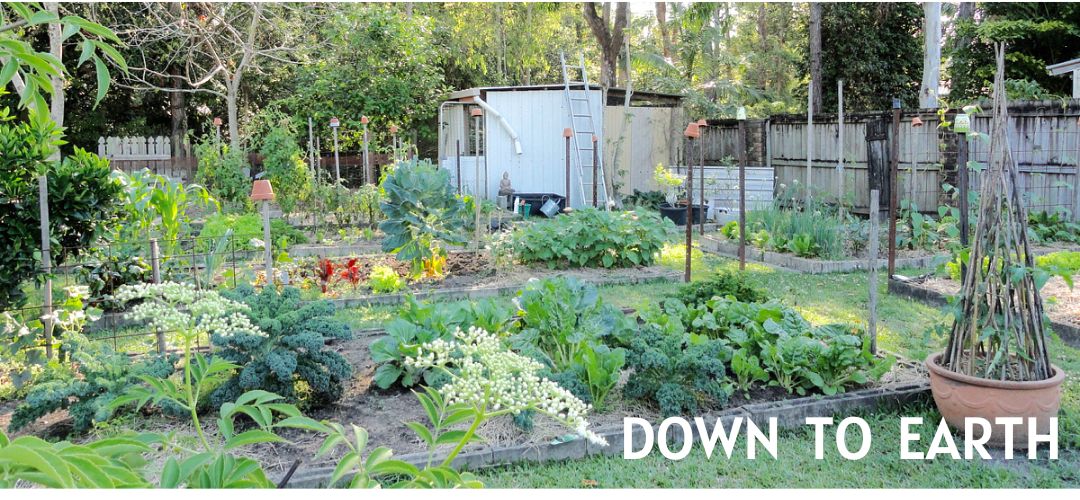The last part of my home review this week is the vegetable garden. The garden is one of four elements that we deal with to put food on the table every day. Those four elements are the vegetable garden, food shopping, food storage and food preparation. They work together, equally important and supportive of the end goal - feeding the family. We start planting our garden in March, it grows slowly at first, always dependent on the weather and what insects are around, and reaches full production around the end of May. As we harvest, Hanno plants more in those empty spaces. What we don't eat fresh is frozen or bottled for our use later in the year, or given away - either to our family or friends.
I took all these photos yesterday afternoon.
It all starts with the seeds. We collect seeds when we can, otherwise we buy open pollinated seeds from Green Harvest. These are loofa seeds above and Easter Egg radish seeds below.
This tray of seedlings will be planted out soon. They are brussel sprouts, lettuce, mini kale and tomatoes.
Not everything we grow is in the ground. Here we have an orange tree waiting to be planted (to replace a pink grapefruit we lost in the recent rains), sweet peas, a bay tree, parsley, lemon myrtle, strawberries and nasturtiums.
And this large green leaf vine is my vanilla orchid. It's snaking its way through the bush house.
The garlic has just pushed through.
Here we have petunias, parsley, beetroot, Chinese cabbage, pineapple sage, tomatoes, chillies and garlic.
Hiding in there is the first tomato.
There must be almost a hundred cucumber flowers on these vines.
We started harvesting the cucumbers this week.
The chooks are the constant companions of the garden. They don't get into the garden, they patrol the grassed area just outside it, waiting for insects and leaves to fall near them.
This bare patch is waiting for the potatoes. We bought some potatoes in Dorrigo on the way back from the book tour and they haven't sprouted yet. They're fresh, straight from the organic farm they were grown on. It's reminds me every time I see them how old the potatoes we buy must be when they often sprout within a week of us bringing them home.
And finally, a second planting of bok choy and lettuce, just near, but out of sight, of the strawberries.Further over, in another garden, Hanno has planted beans, peas, more beetroot, silverbeet, and green onions. There is one more garden to prepare and plant out and then the majority of the hard work is done. Then it's just harvesting and planting in empty spaces.
If you're starting your first garden this year, start small and only grow what you'll eat. Vegetable gardening is a wonderful supplement to the food you have in your kitchen but in those first years, take it slow while you learn what you need to produce vegetables without commercial fertilisers and insecticides. Vegetable gardening is one of the slow elements of simple life - it takes its own time, nothing will hasten a tomato or lettuce to maturity. You have to wait and watch, and while you do, that gentle pace slows you too.
Never expect perfection in the vegetable garden. This is nature working right in front of you. You will have perfect tomatoes and some with grubs, you'll have crisp lettuces then one full of slugs, there will be times when you do your best and it doesn't work, and other times when you don't even plant a seed but up will pop the best cucumbers. It's all part of it, all there for you to learn from. So take notes and record what you plant and harvest, so you can build on what you do this year and take it into the next season.
Gail asked for the Celery and Potato Soup recipe, it's a very simple soup and this method of making soup can be used with almost any vegetable or group of vegetables. The soup makes its own stock while it's cooking. The recipe will feed four people.
- 2 large potatoes - peeled and chopped
- 6 stalks celery - washed and chopped
- 1 large onion - peeled and chopped
- water
- salt and pepper
- a splash of cream
Place the above in a one litre/quart of water, add salt and pepper to taste and cook until soft - about 30 minutes. Blend in a blender or with a stick blender, taste for seasoning, adjust if necessary. Some celery is very stringy, if yours is, strain the soup through a sieve at this point. Then add cream and a sprinkling of parsley and serve. Simple!














